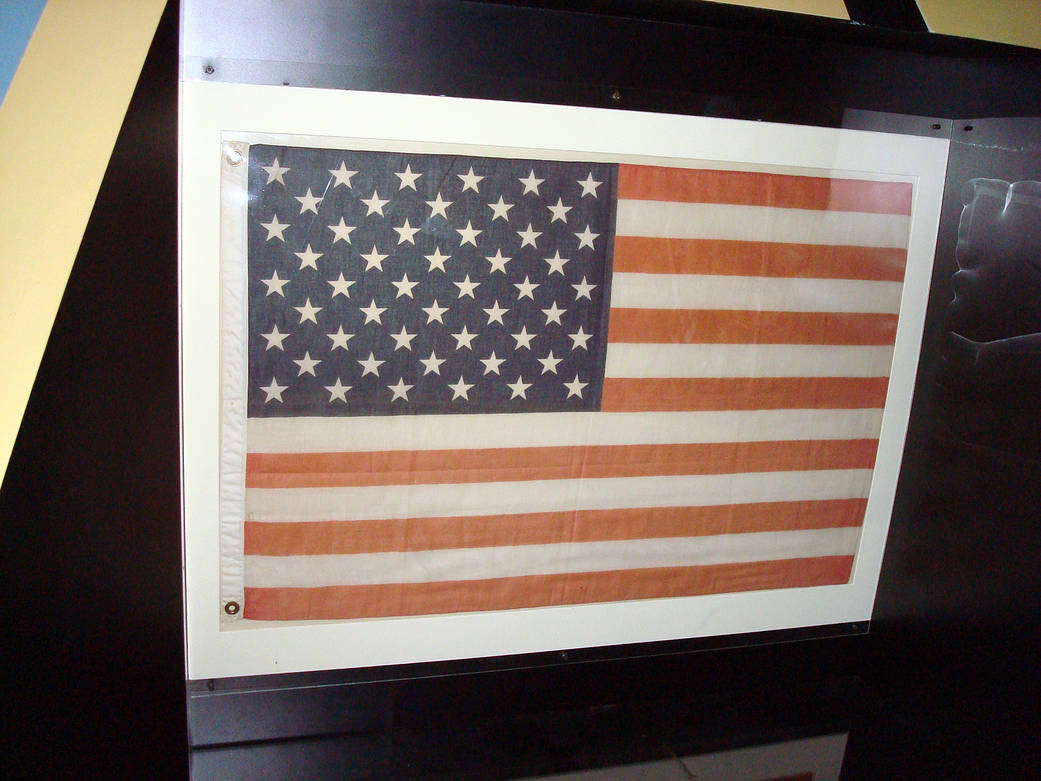1916年,伍德罗·威尔逊总统发布公告,正式将6月14日定为国旗日;1949年8月3日,国会通过法案设立了国旗日。
今天,我们庆祝美国国家航空航天局(NASA)任务中飘扬的国旗。1961年5月5日,美国宇航局宇航员艾伦·b·谢泼德在这面国旗的陪伴下进行了15分钟的亚轨道飞行。作为美国第一次载人航天飞行,这面国旗显然是第一面飞上太空的美国国旗,也是第一面两次飞上太空的美国国旗。
根据史密森尼:“佛罗里达州发射地点附近的可可海滩学校的学生会主席和校长把国旗交给了一名记者,然后,他把它交给了美国宇航局太空任务小组的负责人罗伯特·吉尔鲁斯,并要求如果可能的话,把它带到Mercury-Redstone 3(MR-3)上。旗帜被卷起并卡在Shepard的宇宙飞船Freedom 7中,尽管Shepard并不知道它在那里。1961年7月4日,国旗回到地球后,也飘扬在宾夕法尼亚州费城的独立大厅。吉尔鲁斯随后把国旗还给了学校,学校后来被称为自由7学校(the Freedom 7 School)。学校关闭后,史密森学会于1984年收到了这面作为布里瓦德(佛罗里达州)县教育委员会礼物的国旗。”
In 1916, President Woodrow Wilson issued a proclamation that officially established June 14 as Flag Day; on August 3, 1949, National Flag Day was established by an Act of Congress.
Today, we celebrate flags flown on NASA missions. This flag accompanied NASA astronaut Alan B. Shepard on his 15-minute suborbital journey on May 5, 1961. As the first U.S. human spaceflight, this flag was apparently the first U.S. flag flown into space–and the first flag to have been flown in space twice.
According to Smithsonian: “The student council president and the principal of Cocoa Beach School near the Florida launch site gave the flag to a reporter, who in turn gave it to the head of the NASA Space Task Group, Robert Gilruth, with the request that it be included on Mercury-Redstone 3 (MR-3), if possible. The flag was rolled up and stuck in a wiring bundle in Shepard’s spacecraft, Freedom 7, although he was not aware that it was there. After it returned to Earth, the flag was also flown over Independence Hall in Philadelphia, PA on July 4, 1961. Gilruth then returned the flag to the school, which was later called the Freedom 7 School. After the school later closed, the Smithsonian Institution received it in 1984 as a gift of the Brevard (Florida) County Board of Education.”
Image Credit: Smithsonian Air & Space Museum



